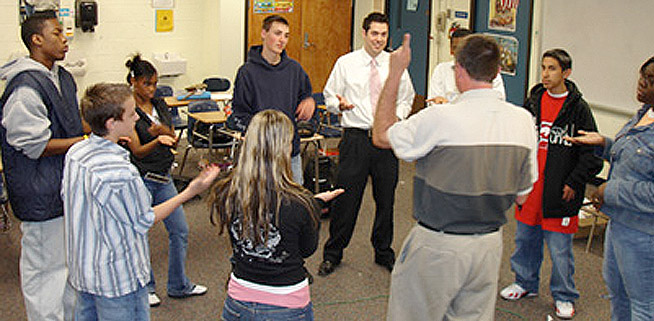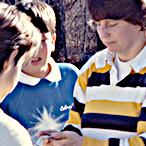
The Rite of Passage Experience© (ROPE®) is more than just a quick fix or another “program.” It is an intentional assets-based process that builds a community’s capacity to respond collaboratively to the challenges faced by today’s youth and their parents/guardians.
It integrates the wisdom of our ancestors with contemporary social and behavioral science to organize the community, within a common language and shared emotional experience, to employ its resources to help children grow up well and become healthy, happy, responsible adults. At the same time the process strengthens the bonds between members of the community increasing their resilience and ability to adapt to meet the challenges of a changing world.
ROPE® is designed to be implemented in three phases:
• Phase I: Call to Action: Transition from primary to secondary school - 6th Grade – Ages 11-12 & their parent/guardian
Developing the skills, competence & healthy identity that supports and guides the transition from childhood to adulthood. Parallel parent/guardian process that addresses the collision of transition and focuses on parent/guardian’s entry into mid-life and release of their children. Offers opportunities to affirm, honor and celebrate significant milestones in people’s lives while making a place for an emerging adult.
• Phase II: Middle School - 7th-8th Grades – Ages 13-14. Exploring Positive Leisure Activities – help youth find their “bliss”
• Phase III: High School - 9th-12th Grades – Ages 15-18. Giving Back to the Community – as an expectation and characteristic of maturity – mentor younger students through the rites of passage experience process.
These phases provide the framework for an effective youth development strategy. Positive developmental pathways are fostered in adolescents, helping them develop a sense of industry and competency, a feeling of connectedness to others, to nature, and to society, a belief in their control over their fate in life, and a stable identity.
These phases also require the community to identify the assets and resources necessary to implement each phase of the initiative. They function, as a vehicle to bring adults together and to shape culturally relevant, developmentally appropriate activities. Throughout the three-phase process, youth, parents/guardians, schools and community members all support and learn from the community-oriented ROPE® process.
There are dual possibilities with youth & community development through rites of passage. First, the community-oriented rite of passage can be derived solely from the 20 elements that serve as principles to inform and guide the design, or can also be used in conjunction with the The Rite Of Passage Experience© ROPE® Guide for Promoting Youth & Community Maturation & Health.
The 20 elements provide helpful markers to enhance their rite of passage experience. The process features contemporary technologies that nurture traditions. A “Trinity of Inquiry” guides a community’s exploration and provides markers to help make decisions about rites of passage as part of education and youth development. The principles of Asset Based Community Development are applied through asset mapping for rites of passage that inform a “Force Field Analysis” process to identify settings strengths, challenges and informs strategies for enhancing education and youth development through rites of passage.
For further information, please visit our Learn More section.
